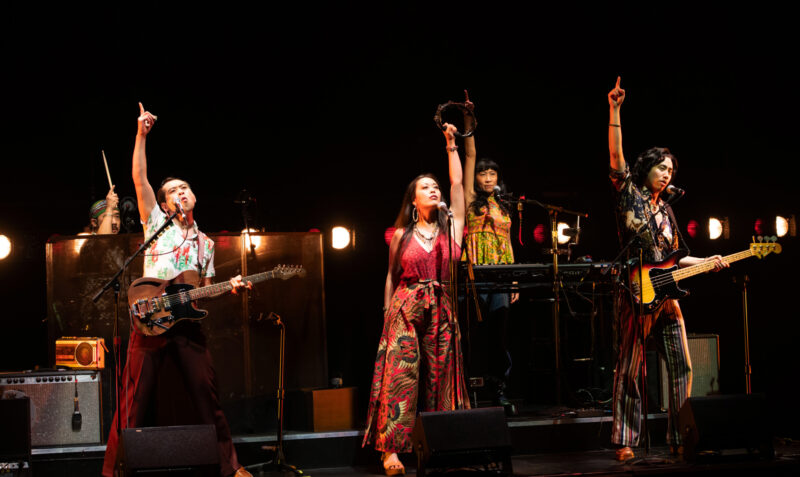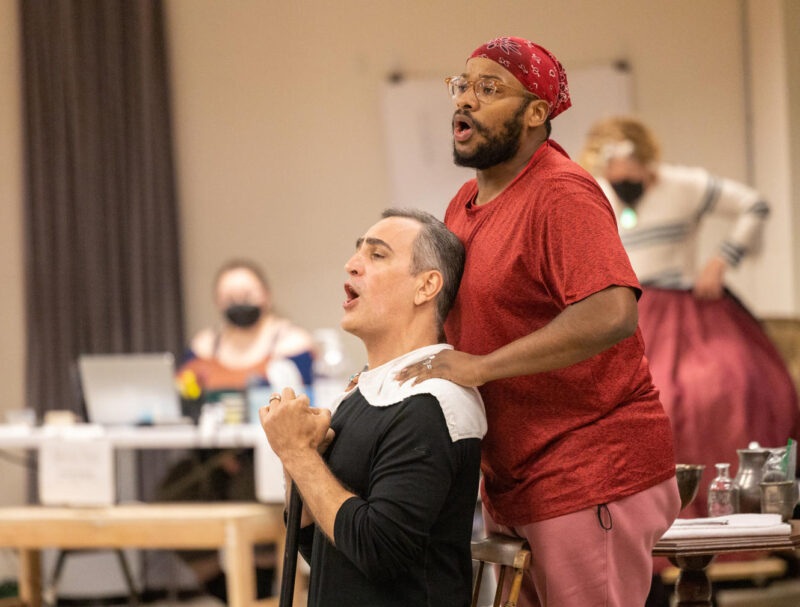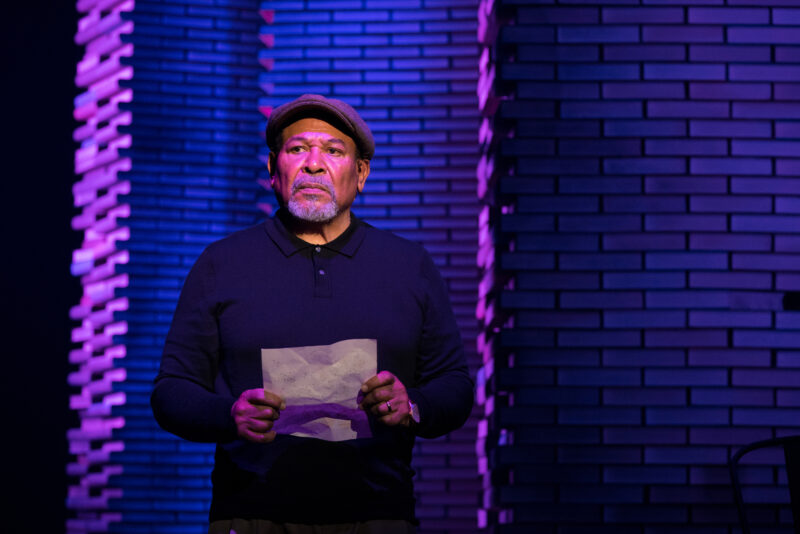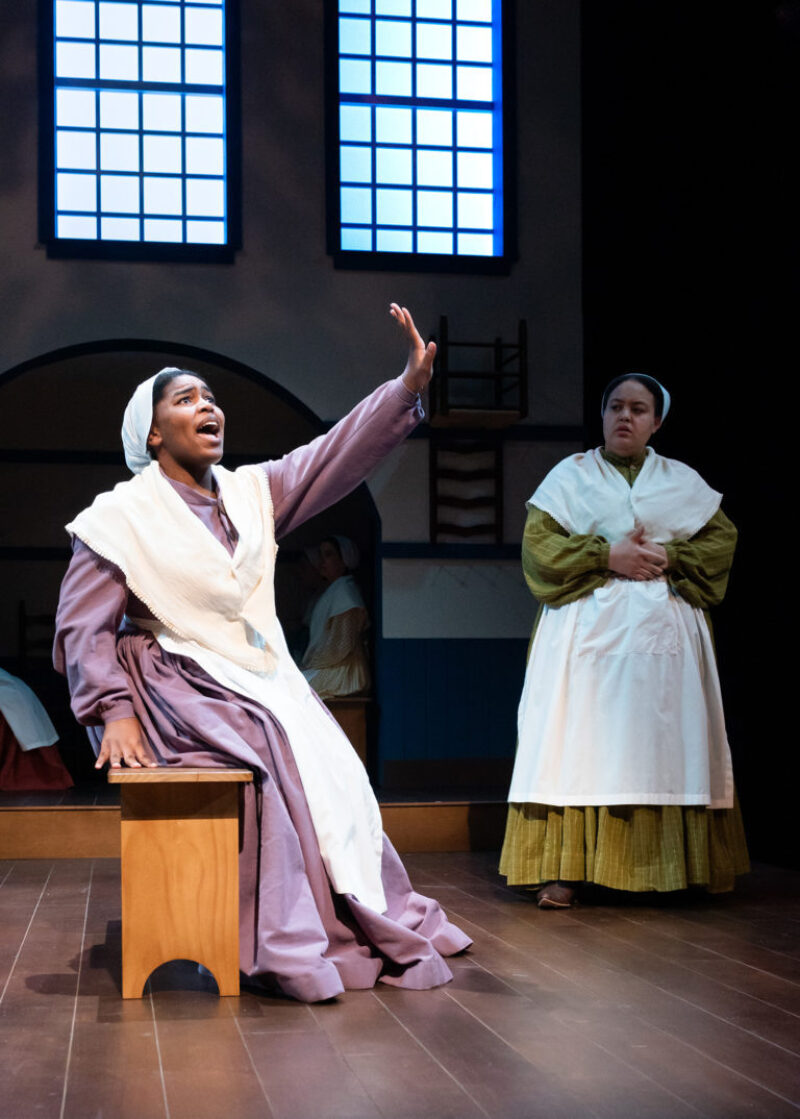Cambodian Rock Band Captures the Soul of Cambodia
Review of Cambodian Rock Band at ACT Theatre
Written by TeenTix Newsroom Writer Indigo Mays and edited by Teen Editorial Staff Member Daphne Bunker
The best way to capture my experience at Cambodian Rock Band, playing at ACT Theatre from September 29 to November 5, was the elderly woman who sat two spots down from me. As we all came back to our seats at the end of intermission, a ginormous version of the Cambodian flag during the period of Khmer Rouge was draped over the small stage. The red stage lights lit up the flag in a way that made it appear bloody and threatening, and the entire fifteen-minute intermission took place over a recording of uniform military marching, immersing the audience in a fear of the looming Khmer Rouge. As we tried to make small talk, a small elderly woman offered us lumpia out of a bag she had brought into the theater, for, I presume, her grandson. Separated by a language barrier and a general principle of not accepting food from strangers, I politely declined, but my friend, who was hungry, eagerly took one. The smell of fried crunchy carbs overwhelmed me and I also took one. We showed our appreciation the best we could before the lights started to dim again and the show unpaused. What is true to both the play and reality is that even in the brutal conditions and mere threat of the Khmer Rouge, the soul and spirit of the Cambodian people went undeterred. Brooke Ishibashi, Jane Lui, Abraham Kim and Tim Liu in Cambodian Rock Band at Arena Stage at the Mead Center for American Theater. Photo by Margot Schulman.
Cambodian Rock Band, written by Lauren Yee and directed by Chay Yew, tells the story of former musician Chum, through the narration of both Chum himself and the cynical war criminal, Duch. The story starts when Chum returns to Cambodia for the first time since the regime of Pol Pot to convince his American daughter, Neary, to drop her case against Duch, the prison manager of the infamously lethal S-21, and become a lawyer in the U.S. After finding out her father is the eighth survivor of S-21 and her key to indicting Duch, Neary and Chum have a huge fight over victimhood, assimilation, and accountability, leading Neary to disappear. Over voicemail, Chum jumps back in time to explain to his daughter the plights, pride, and nuanced events of his youth.





















